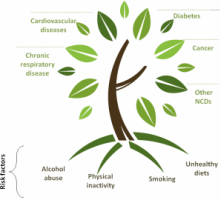In an effort to tackle this problem, the Ministry of Health and Population, with the support of WHO, has adopted the WHO STEPwise approach to noncommunicable disease risk factor surveillance.
The WHO STEPwise approach is a simple, standardized method for collecting, analysing and disseminating data in countries.
The STEPwise survey was successfully conducted in Egypt in 2011 using a standard survey instrument and a methodology adapted to Egypt’s resource setting.
In an attempt to get a balanced picture of the status of noncommunicable diseases in Egypt, the survey used a specifically designed multi-stage cluster sampling frame. On the basis of this sample, researchers are confident to make generalizations for the whole population.
The survey updates existing data from the 2005 survey on noncommunicable diseases in Egypt. It is also being used to monitor and evaluate population-wide interventions.
Data analysis and final report writing are currently in progress. The final results will be released in 2012.
The survey was funded and technically supported by WHO with additional technical support from the United States Centers for Disease Control and Prevention (CDC) for assessing the different risk factors for noncommunicable diseases.
Regional programme for noncommunicable diseases









